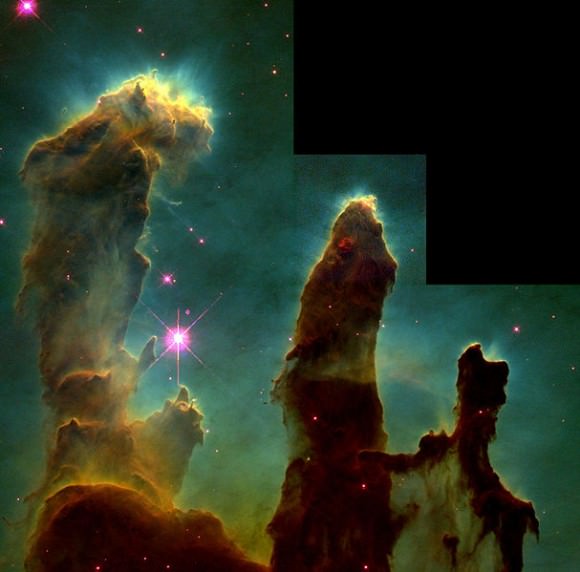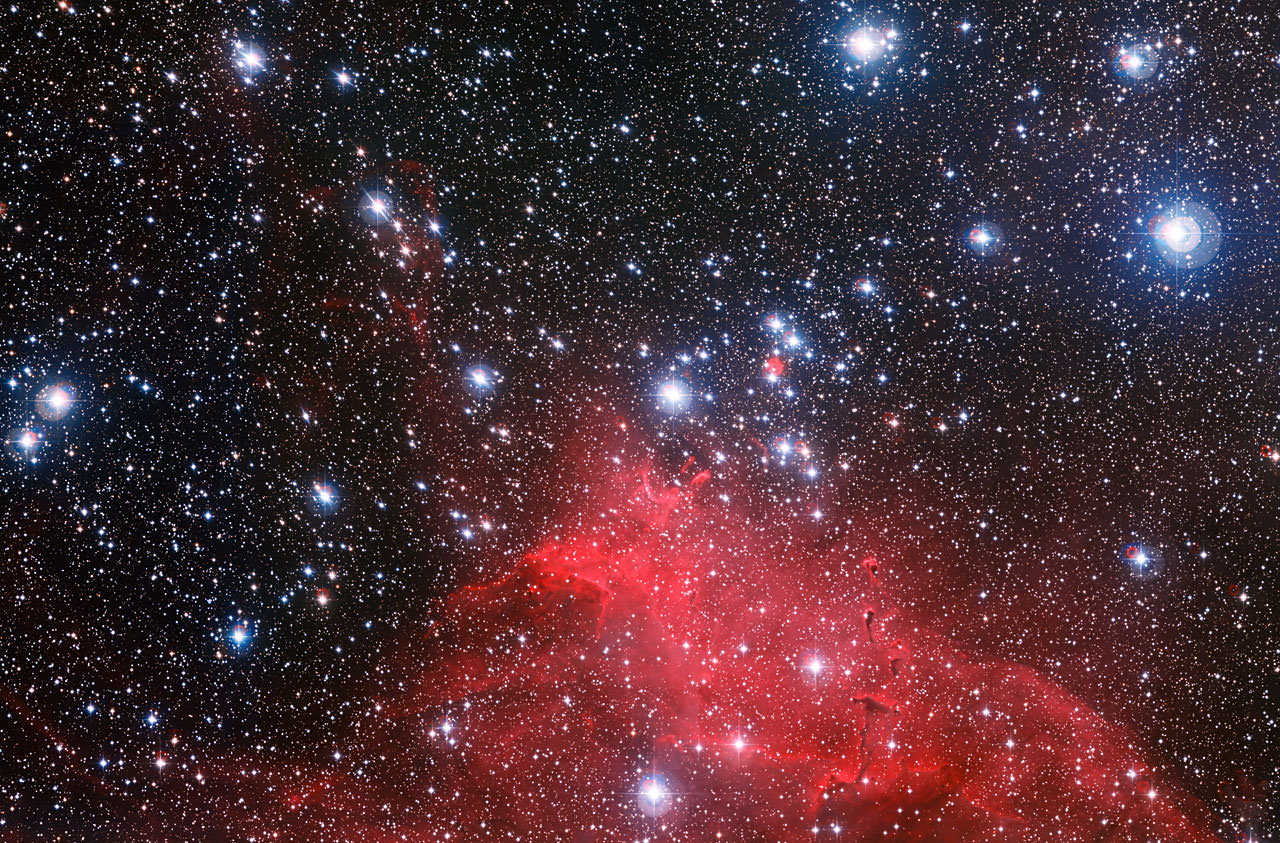Star winds are pushing the gas around NGC 3572 into “elephant trunks”, as you can see if you look carefully as this picture snapped by a La Silla Observatory telescope at the European Southern Observatory in Chile. It’s a demonstration of the power of the youngster blue-white stars embedded in the cloud, which are generating huge gusts blowing the gas and dust away from them.
It’s common for young stars to form in groups. After a few million years growing together, their respective gravities pushes everything further apart, and the stars then finish their lifetimes on their own. Looking at young star clusters such as this gives astronomers a better sense about how our own Sun began its life.
If we zoomed closer to those elephant trunks, they would look similar to the famous “Pillars of Creation” image captured in 1995 by the Hubble Space Telescope in the Eagle Nebula (M16). NASA also did a follow-up observation using infrared wavelengths in 2005 and 2011, which made the young stars a bit easier to see amid the gas and dust.

As for the picture of NGC 3572, the high-resolution image from the Wide Field Imager on the MPG/ESO 2.2-metre telescope is also revealing new mysteries that will require further investigation, ESO stated.
“A strange feature captured in this image is the tiny ring-like nebula located slightly above the centre of the image,” ESO wrote. “Astronomers still are a little uncertain about the origin of this curious feature. It is probably a dense leftover from the molecular cloud that formed the cluster, perhaps a bubble created around a very bright hot star. But some authors have considered that it may be some kind of oddly shaped planetary nebula — the remnants of a dying star.”
Astronomers were also surprised by seeing stars older than 10 million years old within this image that were still picking up mass, which implies that planetary formation could take longer than previously believed.
Research was led by ESO astronomer Giacomo Beccari.
Source: European Southern Observatory

